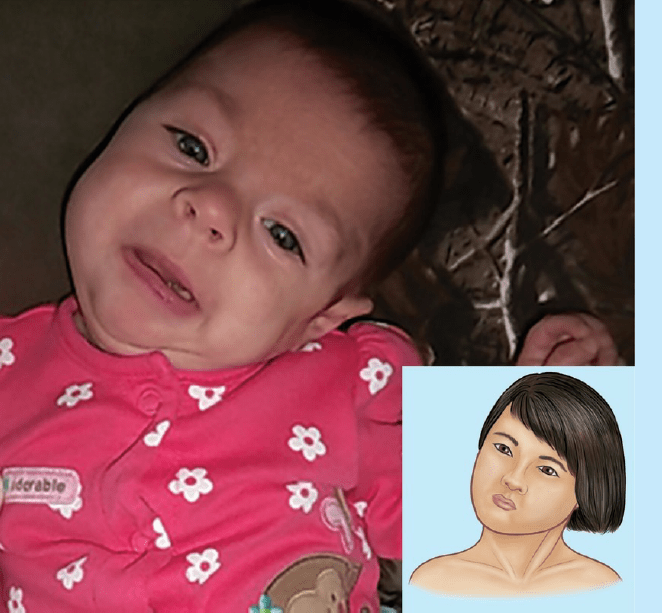Torticollis (Wry Neck)
content of this page
1- Introduction
2- Anatomical Overview
3- Causes
4- Treatment
Introduction
Torticollis, also known as wry neck, is a condition characterized by an abnormal, often asymmetrical, head or neck position. This condition can be congenital (present at birth) or acquired due to various factors such as muscle spasms, injury, or underlying medical conditions. Torticollis can cause discomfort, limited range of motion, and difficulty in maintaining a normal head position.

Anatomical Overview
Torticollis, or wry neck, is a condition that affects the muscles of the neck, leading to an abnormal tilt, rotation, or deviation of the head. It can be broadly categorized into two types: congenital and acquired. Congenital torticollis is present at birth and is often due to abnormal positioning of the fetus in the womb or muscle fibrosis. Acquired torticollis develops later in life and can be caused by factors such as muscle spasms, trauma, infections, or underlying medical conditions like cervical dystonia.
The muscles most commonly involved in torticollis are the sternocleidomastoid muscle (which runs along the side of the neck) and the trapezius muscle (which runs from the neck to the shoulder). When these muscles contract or become shortened on one side of the neck, they pull the head into an abnormal position, leading to torticollis. This can result in a variety of symptoms, including neck pain, stiffness, limited range of motion, and headaches.
Causes
Viral Tonsillitis:
- Viral tonsillitis usually resolves on its own without specific treatment.
- Supportive care measures, such as rest, staying hydrated, and using over-the-counter pain relievers like acetaminophen or ibuprofen, can help alleviate symptoms.
Bacterial Tonsillitis (Strep Throat):
- If the cause is confirmed or strongly suspected to be a bacterial infection, particularly group A streptococcus, treatment with antibiotics is necessary to prevent complications and reduce the duration of symptoms.
- Common antibiotics prescribed for strep throat include penicillin, amoxicillin, or erythromycin.
- It’s important to complete the full course of antibiotics as prescribed, even if symptoms improve before finishing the medication.
Pain Relief:
- Over-the-counter pain relievers like acetaminophen or ibuprofen can help reduce fever and alleviate throat pain.
- Throat lozenges or gargling with warm salt water may also provide relief.
Fluids and Rest:
- Drinking plenty of fluids helps prevent dehydration and soothes the throat.
- Getting adequate rest supports the body’s immune response and promotes healing.
Corticosteroids:
- In some cases, corticosteroids may be prescribed to reduce inflammation and swelling of the tonsils, especially if there is difficulty breathing or swallowing.
Surgical Removal (Tonsillectomy):
- For individuals with recurrent tonsillitis or severe, chronic tonsillitis that does not respond to other treatments, surgical removal of the tonsils (tonsillectomy) may be recommended.
Antiviral Medications:
- In rare cases of severe viral tonsillitis, antiviral medications may be prescribed, but these are less common than for bacterial infections.
Treatment
-
Physical Therapy:
- Gentle stretching exercises and physical therapy can help improve range of motion, strengthen muscles, and correct posture.
- For infants with congenital muscular torticollis, physical therapy can help stretch and strengthen the affected muscles.
-
Medications:
- Muscle relaxants or botulinum toxin injections (Botox) may be used to reduce muscle spasms and alleviate pain.
- Pain relievers such as ibuprofen or acetaminophen may be recommended for pain management.
-
Heat and Cold Therapy:
- Applying heat or cold packs to the affected area can help reduce pain and muscle spasms.
-
Surgery:
- In severe cases of torticollis that do not respond to conservative treatments, surgery may be recommended to release or lengthen the affected muscles.
- Surgery is also an option for individuals with cervical dystonia who do not respond to other treatments.
-
Neck Braces or Collars:
- These devices may be used to support the neck and promote proper alignment, especially during the healing process.
-
Botulinum Toxin Injections:
- In cases of cervical dystonia, injections of botulinum toxin into the affected muscles can help reduce muscle contractions and improve symptoms.